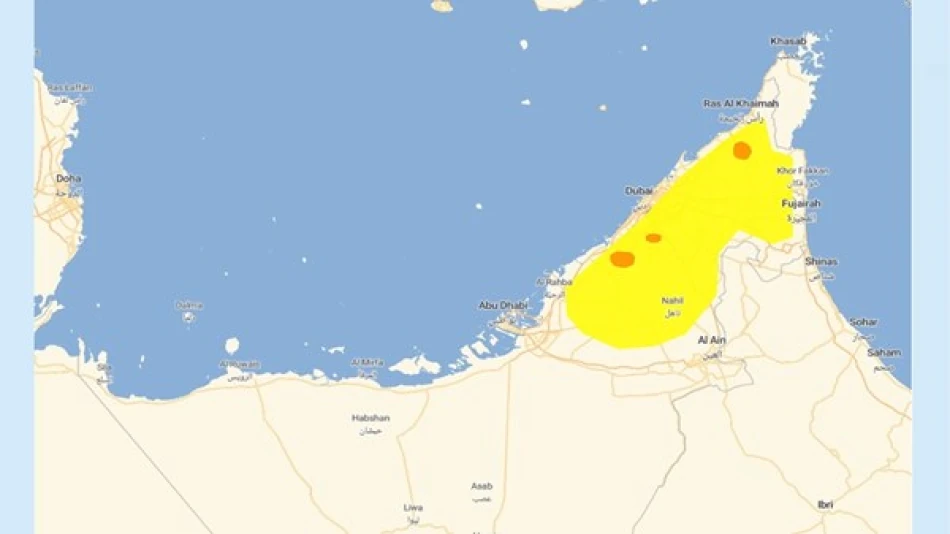
National Meteorology Authority Warns of Reduced Horizontal Visibility Across the Kingdom
Dubai Airport Faces Severe Dust Storm as Visibility Drops to Critical Levels
Dubai's Al Maktoum International Airport at Al Manhal is experiencing hazardous flying conditions as a severe dust storm has reduced horizontal visibility to less than 1,500 meters, prompting urgent warnings from the UAE's National Center of Meteorology for road users and aviation operations.
Immediate Impact on Aviation and Transportation
The dramatic reduction in visibility poses significant challenges for one of the world's busiest aviation hubs. When visibility drops below 1,500 meters, airports typically implement enhanced safety protocols that can include delayed takeoffs, diverted flights, and increased spacing between aircraft operations.
Road users in the area face equally dangerous conditions, with the meteorological center emphasizing the need for extreme caution. Dust storms of this intensity can reduce visibility to mere hundreds of meters within minutes, creating treacherous driving conditions on Dubai's typically busy highways.
Regional Weather Patterns and Economic Implications
The Gulf's Dust Storm Challenge
The Arabian Peninsula experiences some of the world's most intense dust storms, particularly during transitional seasons when temperature differentials create powerful wind systems. These events, known locally as "haboob," can stretch across hundreds of kilometers and persist for hours or even days.
For Dubai's economy, heavily dependent on aviation and logistics, such weather events represent more than temporary inconvenience. Dubai International Airport and Al Maktoum International together handle millions of passengers and vast cargo volumes monthly, making weather-related disruptions costly for airlines, businesses, and the broader regional economy.
Aviation Industry Adaptation
Middle Eastern airports have invested heavily in advanced weather monitoring systems and dust mitigation technologies. Dubai's airports utilize sophisticated radar systems and automated weather stations to provide real-time updates to pilots and air traffic controllers, enabling safer operations during challenging conditions.
The aviation sector has learned to build flexibility into schedules during dust storm seasons, with airlines maintaining buffer times and alternative routing options. However, severe events like this current storm still create significant operational challenges that can ripple through global flight networks.
Climate and Infrastructure Resilience
As climate patterns shift and extreme weather events become more frequent, the UAE continues developing infrastructure resilience strategies. The country's investment in weather forecasting capabilities and emergency response systems reflects recognition that environmental challenges require proactive management to maintain economic competitiveness.
This latest dust storm serves as a reminder of nature's ability to disrupt even the most advanced urban centers, highlighting the ongoing need for robust meteorological monitoring and public safety systems in one of the world's major transportation and business hubs.
 Layla Al Mansoori
Layla Al Mansoori







